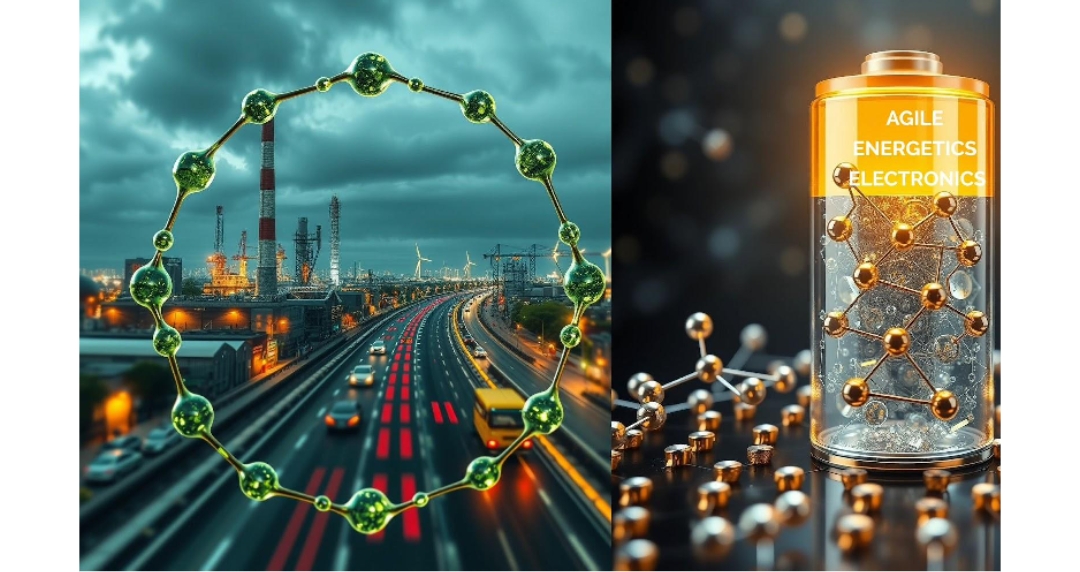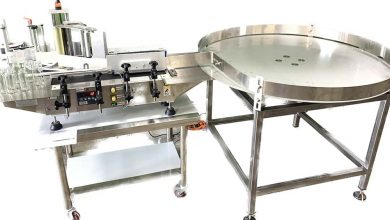Shifting the Energy Paradigm: Agile Energetics Electronics’ Role in California’s Sustainable and Resilient Future
Agile Energetics Electronics LLC is an advanced manufacturing company based in California, founded and led by Arthur Rublacava. Under his leadership, AEE has positioned itself at the forefront of innovation, delivering cutting-edge solutions across the traffic, energy, renewable energy, medical, and industrial sectors. The company specializes in “Made in California” initiatives and supporting domestic manufacturing excellence.

Photo Courtesy of Agile Energetics Electronics LLC
Meet The Founder: Building Resilience Through Innovation
Arthur Rubalcava brings more than 17 years of experience in the industrial technology sector. He is a SoCal native, born and raised in Whittier, California. He graduated with a Bachelor’s in Science, STEM focus degree from Cal Poly Pomona. His career began at The Home Depot and evolved into project and program management roles at Curtiss-Wright, where he led complex projects in the defense, energy, and industrial markets. Curtiss-Wright Corporation is a longstanding American engineering firm known for its high-performance, mission-critical technologies serving the aerospace, defense, energy, and industrial markets. With a legacy dating back to the early 20th century and roots in aviation history, Curtiss-Wright plays a vital role in advancing national security and infrastructure reliability. Its precision-engineered systems contribute to everything from nuclear power generation to advanced military platforms, making it a key contributor to the U.S. industrial base and defense economy.
Today, he continues to drive innovation through collaborative initiatives with Southern California Edison, contributing to the development and modernization of substations to support the state’s goals for energy resilience and sustainable infrastructure. Southern California Edison (SCE) is one of the largest electric utilities in the United States, serving over 15 million residents across Central, Coastal, and Southern California. As a subsidiary of Edison International, SCE is central to California’s clean energy transition, driving innovation in grid modernization, renewable energy integration, and energy resilience. The utility’s investments in infrastructure and sustainable power delivery directly support the state’s climate goals and broader national energy security objectives.
Environmental and Economic Transformation: Superpower Series-Graphene Hybrid Supercapacitor
Headquartered in Brea, California, AEE operates manufacturing facilities in both San Bernardino and Orange Counties. One of the company’s most successful products is the cable harness kits for traffic control cabinets. The cable harnesses are fully designed, sourced, and manufactured in the United States. By maintaining a 100% domestic supply chain, AEE meets the compliance standards for Build America, Buy America (BABA) projects, making it an ideal partner for federally funded infrastructure initiatives. This localized manufacturing approach not only supports California’s economy but also ensures superior quality, reduced lead times, and a more secure, resilient supply chain.
One of AEE’s flagship innovations is the Superpower Series—a hybrid graphene-based energy storage solution designed for long-term performance and enhanced environmental sustainability. These Graphene Hybrid Supercapacitor (GHSC) modules significantly outperform traditional lead-acid batteries across multiple metrics. Graphene, known for its exceptional electrical properties, is a highly potent but seldom-utilized material in commercial energy systems. Shireen Bojja, Engineering Manager at AEE and founder of Voltek Ace LLC, spearheaded the research and development efforts in collaboration with top-tier researchers and the advisory council at AEE, successfully transforming graphene into a commercially viable and scalable energy storage solution.
Traditional lead-acid batteries are composed of highly corrosive sulfuric acid and significant quantities of lead—a toxic heavy metal known to cause serious health hazards. The acid not only poses a direct chemical risk but also facilitates the mobility of soluble lead and airborne lead particles, amplifying the danger. Elevated lead exposure has been linked to cognitive and developmental impairments, kidney damage, and auditory issues. Due to the hazardous nature of lead, proper disposal and environmentally responsible recycling of depleted batteries are critical. Improper disposal into general municipal waste streams can have severe consequences—a single mismanaged lead-acid battery can contaminate up to 25 metric tons of municipal solid waste, rendering the recovery of organic resources from that batch unviable due to excessive lead contamination.
On the other hand, the graphene based energy storage is low maintenance with no risk of thermal runaway. A ten-year cost-benefit analysis reveals that while lead-acid batteries require costly replacements every two years, GHSC modules are maintenance-free over the same period. The technology delivers exceptional life cycle improvements—over 12,000% at full discharge and up to 90,000% at partial discharge—making it a future-ready alternative for energy-intensive infrastructure. The graphene hybrid supercapacitor modules support over 20,000 charge-discharge cycles while fully recharging in under 10 minutes, demonstrating superior performance to conventional battery technologies. These non-toxic modules operate across a wide temperature range from -30 degrees Celsius to +70 degrees Celsius, eliminating hazardous leakage risks and enabling safe deployment in roadside cabinets, fleet depots, and remote installations.
To support public sector adoption, AEE maintains end-of-line production capabilities within California, ensuring that GHSC modules are BABA-compliant and ready for deployment in grant-funded infrastructure projects. This alignment with regulatory standards helps agencies avoid delays and cost overruns while contributing to emission reductions and long-term sustainability goals. The technology’s reliability in extreme environments makes it especially well-suited for critical applications.
GHSC modules are currently undergoing field testing in Intelligent Transportation Systems (ITS) and through collaborations with the U.S. Department of Transportation. Early results point to significantly reduced maintenance needs, fewer service interruptions, and enhanced operational uptime. More than just an energy storage upgrade, GHSC represents a fundamental shift toward smarter, more resilient public infrastructure. For agencies seeking alternatives to traditional batteries, AEE’s solution offers unmatched durability, cost-effectiveness, and scalability.
Through his visionary leadership and technical depth, Arthur has shaped AEE into a model for how advanced manufacturing can align with public-sector priorities—driving forward national objectives around infrastructure modernization, domestic sourcing, and climate resilience.





